Audi A3 2003 - 2013 - USED, ENGINE, FAULTS
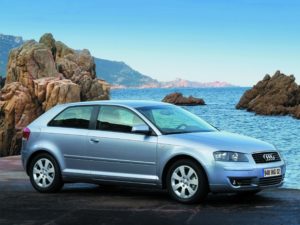
Audi A3
2003 saw the appearance of the Audi A3 8P / 8PA, which, like the previous generation, is closely linked to the Golf, this time being the fifth generation of the Golf. Audi A3 with Golf 5 shares many components such as some engines, the chassis is also considered a luxury and sporty alternative to the Golf V.
The PK35's platform alongside the second-generation Audi A3 is used by the Golf 5, Skoda Octavia 2, Seat Leon 2 and the second-generation Audi TT.
There are three variants of the Audi A3: a three-door compact body, and since September 2004, a five-door "Sportback" and since March 2008 an Audi A3 convertible with a four-seater canvas roof.
Quality workmanship. This car solves the technical problems that followed the previous generation. The second-generation Audi A3 takes on all the features of the previous model, which are: high quality workmanship, Dynamic Drive, high safety and excellent petrol and diesel engines, which enjoy driving.
The Audi A3 has been redesigned twice. For the first time in 2005 a purely cosmetic procedure - the three-door version received a large grille, just like the Sportback. The second restailing was carried out in 2008. This time the front of the car and the interior were refreshed, the most characteristic being the new LED headlights.
The sports version of the S3 debuted in 2006. The car is equipped with a 2.0 TFSI gasoline direct injection 265 hp turbocharged engine. As standard, each specimen is available with quattro drive. But this is not a permanent four-wheel drive, some gear shifting to the rear wheels when the front wheels slip. In 2008, the range expanded with the S3 Sportback version.
You want to buy an Audi A3 II can choose from 14 engine variants, three body variants and different gearboxes. A quattro drive was also offered. A wide range of prices is therefore present.
Like the premium car, the interior of the Audi A3 is decorated with high-quality materials, paying attention to the precision of the fit.
The Audi A3 board is entirely made of black plastic and exudes German simplicity and elegance. The steering wheel and gear lever are lined with leather. Chrome rings for about an hour and chrome straps under the buttons. Beautiful as it is functional, the rings around the vents, which also serve as buttons for determining the degree of ventilation.
The finishing details are great, it gives the impression of luxury, the seats can be adjusted on all axles, as well as the steering wheel, so that everyone will be able to adjust it according to their needs. The cabin space is larger than in the generation before. There is a good amount of space for passengers and luggage. The Audi A3 has a 350 liter luggage compartment volume, which is fairly average for a family hatchback, though when it comes down the rear seats increase to 1100 liters. Parking is not too difficult, but low speed maneuvers were aided by its turning circle and optional parking sensors.
Great design and a German level of quality are the things that have attracted a lot of buyers of this Audi model. The Audi A3 even managed to get a lot closer to the BMW model in terms of ride quality, but still not reach it and overtake it. The cabin is well insulated so you can enjoy the quiet in the city as well as on the open road. Everything is high in the cabin, the materials look impressive and the instruments are transparent and modern
In terms of safety, the A3 received four stars in the Euro NCAP passenger safety test and three in child safety.
The Audi A3 is nice to drive and easy to operate, though it lacks the sharpness that BMW has. It is comfortable even at higher speeds, although on Sport models the suspension is too stiff.
Audi A3 - Engines
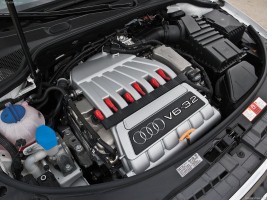
Audi A3
The Audi A3 is offered with a large number of powertrains. In the case of petrol engines, customers can opt for the 1.2 TSI (105 hp), 1.4 TFSI (125 hp), 1.6 (102 hp), 1.6 FSI (115 hp), 1.8 TFSI (160 hp), 2.0 FSI (150 hp) ), 2.0 TFSI (200 hp and 265 hp) and 3.2 FSI V6 (250 hp). In the case of diesel engines you can choose from the 1.6 TDI (90 hp and 105 hp), 1.9 TDI (105 hp) and 2.0 TDI (140 hp and 170 hp). The drive can be transferred to front or quattro four-wheel versions, choose a manual transmission is a 5 or 6-speed transmission with a 6-speed automatic DSG.
Many different engines are available to buyers. The Audi A3 petrol engines range from 102 hp to 250 hp. All engines are front-drive as standard, but all four quattro wheels can be ordered for an extra charge. The strongest Audi A3 gasoline engine is the quattro drive as standard. All gasoline engines meet the Euro 4 standard. Gasoline engines rarely suffer from mechanical defects. If there is something wrong with them, it is usually the fault of some electronic sensor.
Audi A3 1.6-liter petrol engine with 8hp. The simplest of the engines offered is unable to provide stunning dynamics. Many people will blink at 102s to 11s, considering the fact that the engine lacks a turbocharger and direct fuel injection, which will significantly reduce maintenance costs, also uses a gear belt for the drive. Recommended because it is very durable. No problem working with LPG.
This engine can travel up to 400000 km without major overhauls and even more. Its only weak point is its thermostat, which rarely withstands 100000 km.
The 1,6 8V 0 to 100 km / h engine reaches 11,9 seconds and reaches a top speed of 185 km / h.
The Audi A3 with 1.4 TSI, 1.8 TFSI and 2.0 TFSI engines is further equipped with a turbocharger.
TFSI engines Regardless of version and power, they have direct fuel injection and a turbine. This means low fuel consumption, good performance and high maintenance costs.
Modern gasoline engines with direct fuel injection into the combustion chamber FSI 1.6 - liter (115 hp) and 2,0 liters (150 hp), as a rule without problems, but require high fuel quality and regular maintenance. Maintenance is more expensive.
FSI and TFSI engines can withstand gas installations, but it is not very profitable. For this reason, while driving, the car consumes not only gas but also a small amount of gasoline (used to cool the injectors), and thus the fuel savings are less than usual.
Version 1.4 TFS. It theoretically combines good performance with low fuel consumption. After 100000 km, the risk of chain problems increases. Provides a favorable balance between performance and fuel economy.
Engine 1.6 FSI, the general opinion is that the mechanics have several weaknesses. Although it has 115 hp at lower revs, it does not develop more power than the 1.6 indirect injection engine with 102 hp, its advantage is that it has a six-speed gearbox as standard, the gearbox becomes very noisy after 160 km / h.
The 2.0 FSI (150 bhp) engine is the first FSI with direct fuel injection, sometimes has a problem with the exhaust system, and draws poorly. TFSI engines are a better option, especially when considering engine power in the range of 160 bhp to 200 bhp along with low fuel consumption of 6.6 liters and 7.2 liters.
The 3.2 V6 engine is for those who are not afraid of fuel consumption in the city of 14 liters of gas per 100 km. The only problem may be the weight (weighing approximately 40 kg than the 2.0 TFSI), which is focused on the front axle.
For fans of old diesel the recommendation is 1.9 TDI PD 105 hp. It is slow but stable and inexpensive to maintain. A very good choice are also the 1.6 TDI CR (90 HP or 105 HP) and the 2.0 TDI CR (140 HP or 170 HP), all equipped with common-rail power. They work pretty quietly.
The good old 1.9 TDI PD (Nozzle Pump) in the poor 105hp version does not impress with performance but has low fuel consumption, high durability and very low maintenance costs.
Almost 190 km / h top speed and 11,5 seconds to accelerate to 100 km / h, average consumption of 6,6 liters.
Engines 2.0 TDI PD (Nozzle Pump) is fast. A much better reputation was enjoyed by the 2.0 TDI CR (common rail), introduced after facial tightening. The same power and performance make it difficult to differentiate between versions. It is risky to buy the 2.0 TDI PD pump nozzle pump. They are much more stable than the infamous 2.0 TDI PD engine from VW Passat B6, but still far from the 1.9 TDI.
From the point of view of a person buying a car with a mileage of 100000 km or more, the best choice is a manual 6-speed. Great attention must be paid to the S tronic transmission. It works phenomenally (fast and accurate), but if the car has high mileage, it can generate costs. First of all - it requires periodic oil changes, every 90000km.
Depending on the S tronic version, there are two types of boxes: 6 and 7-speed. They differ not only in the number of gears, but also the couplings. The first has a wet clutch, the second - dry, which makes it less of a problem. Unfortunately, the 7-speed S tronic is still only adapted to weaker versions of the engine (it has limited torque transmission).
Audi A3 - Model History:
2003: Audi A3 8P presentation. Initially, the car was only offered in the three-door version.
2004: Range is increased by a five-door version, called the Sportback.
2005: First redesign (3-door version gets characteristic big grille as Sportback).
2006: 3hp S265 introduced.
2007: Introduced A3 Cabriolet.
2008: Second restailing of all versions.
2013: New generation of Audi A3 introduced.
Audi A3 - breakdowns and problems
The build quality of the Audi A3 promises you to drive without too much worry if you keep it regular. More reliable are the models after the 2005 rebuild.
1.4 TSFI petrol engine chain is capable of stretching for about 100000 km.
FSI engines are known for accumulating carbon deposits on valves, causing a loss of power.
2.0 FSI model from 2005. Ignition coil malfunctions.
3.2 V6 petrol engine. In the initial models, made in 2003 and 2004, there is an excessive stretching of the chains, which can lead to severe engine damage, bending of the valves, damage to pistons, connecting rods and camshafts.
Engine Cooling Fan Problems on 1.8T Engines, Can Be Caused By Excessive Moisture Under Battery Fuse Box, Causing Corrosion. The advice is to replace the fuse and spray with WD 40 spray.
Audi 3 models manufactured after 2005 include models with a particulate filter. People who go a long way in city driving are advised to avoid them.
The Audi A3 with 1.9 TDI engines (105 hp) leaks fuel at the fuel pump. Error on models manufactured between March and August 2004.
The 1.9 TDI engine may have known problems with flowmeter, turbine and EGR valve problems.
The 1.9 TDI and 2.0 TDI 105hp and 140hp engines, specially made until January 2004, if they have a rough turn and jerk at low rpm, the engine runs on three cylinders, especially at cold start and acceleration. They are caused by engine management (poor measurement of injector flow from computers). Remedy: reprogramming with new software.
1.9 TDI and 2.0 TDI diesel engines. In some rare cases, they suffer from a turbine failure, which is the result of a manufacturing error.
On 2.0 TDI engines, the timing belt can fail at about 100000 km due to a failure of the tensioner, so it is wise to ignore Audi's recommendation of replacing the timing belt at 180000 km. Replace gear belt, tensioner and whatever is needed every 4 years or 100000 km, whichever comes first.
The head of the 2.0 16V TDi engine breaks after 100 km. Initially, the water level drops and causes the engine to run smoothly. In October 000, a modified engine head began to be made.
Revocation to replace Siemens piezoelectric injectors installed between 2006-2009 2.0 TDI BMN engine. All injectors with 2.0TDI PD motors using piezoelectric Siemens injectors and Siemens ECUs are affected by this problem. Most problems on the Passat 2.0 TDI 140 hp BKD. No problem since 2009 and the introduction of a common rail system on the 2.0TDI engine.
There was a recall of the Audi A3 with 2.0 TDI (140bhp) engines and a manual transmission due to the failure of the flywheel, which could cause a problem with the manual transmission. The errors are exposed to models manufactured between October 2003 and December 2005.
DSG gearbox. On some models, shaking the transmission at low revs to a lower gear.
For Audi A3 with DSG gearbox, the software can delay the message from the brake switch to the ECU that the brakes are released, leaving the car at an intersection or roundabout running out of fuel into the combustion chamber and shutting down.
A loud manual transmission is usually caused by worn bearings. Remove and shred to pieces to find any other items that show signs of wear, mostly synchronous.
Code DSG gearbox mechatronics problems occasionally occur. Avoid cars with DSG gearbox, with a jerk who is loud or has trouble changing gears. The gearbox works phenomenally, but after 100000 it requires expensive maintenance to replace the oil, sometimes the clutch.
The Audi A3 6-speed transmission can become rigid when changing gears from 1 to 2. The first one is to replace the transmission oil. Failure to do so requires the replacement of a synchronous ring.
The Audi A3 with 6-speed manual transmissions made in 2006 and 2007 have problems with the planetary gearbox due to a faulty assembly. Quite a high incidence of puncturing the transmission case. The same error also occurs on the Seat Leon, Skoda Octavia and Golf V.
The warning lamp (error) indicates the error code "Pressure stimulus G201". This is installed inside the Teves Mk 60 ABS system and requires replacement of the ABS unit / pump. The problem seems to occur with age, the problem occurs mainly between 3 - 5 years of age of the car. Before you start looking for and solving problems, try a few sudden brakes, which bring ABS into the game. This can sometimes release a stuck brake pressure sensor.
Possibility of cracks on the vacuum tube from the brake servo, resulting in the loss of brake assist servo.
On Audi A3 quattro models, there is rarely a chance of damage to the rear brake pipe. In extreme cases, this can lead to failure of one brake line.
Frequent failures of air conditioners and / or compressors of air conditioners, which are expensive to repair.
Digital LED displays may be damaged due to sub-zero temperatures.
On the front axle, problems with the silencer blocks, leading to a thud, knocking from the rear suspension on the Audi A3 indicates transverse shoulders. Bearings typically withstand up to 100000 km.
The rear wiper stops at different positions on the rear window until it completely stops. Repair involves replacing the electric motor.
Front tires. On some models until 2005, with accelerated asymmetrical wear on the front tires, the factory was not adjusted to the factory.
Airbag indicator. Ignition sometimes unexpected, check the connections of the Airbag wiring harness.
The front side windows get stuck when lowering (they are glued) and will not continue lowering, the problem is solved by lubricating the cedar (guide) glass or replacing it.
The occasional failure of the power steering on slow maneuvers, such as parking.
Some Audi A3s with a dark metallic color may suffer from acidic bird feces damage.
The problem with the air conditioner compressor often has to change, models manufactured since 2005 no longer have this problem.
Used Audi A3 prices - overview
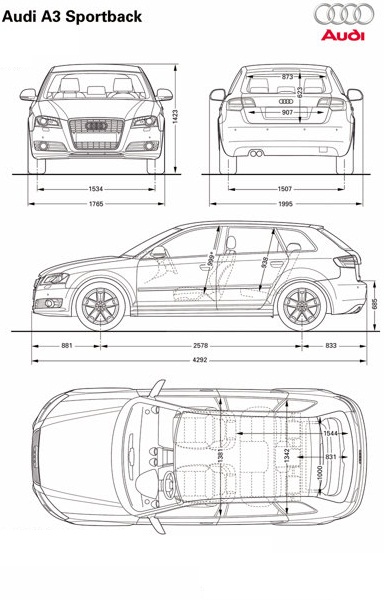
Audi A3
CONCLUSION
Overall, the second-generation Audi A3 is a very reliable car with relatively few flaws,
and this makes it one of the most desirable used cars for that reason it is priced after much
years on the market correspondingly high.
The build quality is on par with the more expensive Audi models, but that is why the price is accompanied by quality.
It loses value very slowly, so specimens that are about 3 years old lose only about a third
the price for which new ones were purchased.
Audi A 3 - Engines
| Gasoline engine | ||||||
|---|---|---|---|---|---|---|
| Model | Engine displacement | Engine code | Max. power @ rpm | Max. torque @ rpm | Acceleration 0–100 km / h | Years |
| 1.2 TFSI | 1,197 cc I4 | CBZB | 105 hp (77 kW; 104 hp) @ 5000 | 175 Nm @ 1550–4100 | 10.6 s | 2010 – 2013 Feet |
| 1.4 TFSI | 1,390 cc I4 | CAXC | 125 hp (92 kW; 123 hp) @ 5000 | 200 Nm @ 1500–4000 | 9.1 s | 2007 – 2013 Feet |
| 1.6 | 1,595 cc I4 | BGU / BSE / BSF / CCS | 102 hp (75 kW; 101 hp) @ 5600 | 148 Nm @ 3800 | 11.5 s | 2003 – 2010 Feet |
| 1.6 FSI | 1,598 cc I4 | BAG / BLF / BLP | 115 hp (85 kW; 113 hp) @ 6000 | 155 Nm @ 4000 | 10.6 s | 2003 – 2007 Feet |
| 1.8 TFSI | 1,798 cc I4 | BYT / BZB | 160 hp (118 kW; 158 hp) @ 5000–6200 | 250 Nm @ 1500–4200 | 7.7 s | 2007 – 2008 Feet |
| SADC | 160 hp (118 kW; 158 hp) @ 4500–6200 | 250 Nm @ 1500-4500 | 7.4 s | 2009 – 2013 Feet | ||
| 2.0 FSI | 1,984 cc I4 | AXW / BLR / BLX / BLY BVY / BVX / BVZ |
150 hp (110 kW; 148 hp) @ 6000 | 200 Nm @ 3250–4250 | 8.8 | 2003 – 2008 Feet |
| 2.0 TFSI | AXX / BPY / BWA / CAWB | 200 hp (147 kW; 197 hp) @ 5100–6000 | 280 Nm @ 1800–5000 | 6.8 s | 2004 – 2008 Feet | |
| ACZA | 200 hp (147 kW; 197 hp) | 280 Nm @ 1700–5000 | 6.8 s | 2009 – 2013 Feet | ||
| BHZ / CDLA | 265 hp (195 kW; 261 hp) @ 6000 | 350 Nm @ 2500–5000 | 5.6 s | 2006 – 2013 Feet (Audi S3) |
||
| 2.5 TFSI | 2,480 cc I5 | Strain | 340 hp (250 kW; 335 hp) @ 5400–6500 | 450 Nm @ 1600–5300 | 4.6 s | 2011 – 2013 Feet (Audi RS 3) |
| 3.2 | 3,189 cc V6 | BDB / BMJ / BUB | 250 hp (184 kW; 247 hp) @ 6300 | 320 Nm @ 2500–3000 | 6.3 s | 2003 – 2009 Feet |
| Diesel engine | ||||||
| Model | Engine displacement | Engine code | Max. power @ rpm | Max. torque @ rpm | Acceleration 0–100 km / h | Years |
| 1.6 TDI | 1,598 cc I4 | CAYB | 90 hp (66 kW; 89 hp) @ 4200 | 230 Nm @ 1500–2500 | 11.4 s | 2009 – 2013 Feet |
| CAYC | 105 hp (77 kW; 104 hp) @ 4400 | 250 Nm @ 1500–2500 | 11.0 s | 2009 – 2013 Feet | ||
| 1.9 TDI | 1,896 cc I4 | BJB / BKC / BXE / BLS | 105 hp (77 kW; 104 hp) @ 4000 | 250 Nm @ 1900 | 11.0 s | 2003 – 2009 Feet |
| 2.0 TDI | 1,968 cc I4 | BKD | 140 hp (103 kW; 138 hp) @ 4000 | 320 Nm @ 1750–2500 | 9.2 s | 2003 – 2008 Feet |
| BMM | 140 hp (103 kW; 138 hp) @ 4000 | 320 Nm @ 1750–2500 | 9.2 s | 2006 – 2008 Feet | ||
| BMN | 170 hp (125 kW; 168 hp) @ 4200 | 350 Nm @ 1750–2500 | 7.9 s | 2006 – 2008 Feet | ||
| CBAB | 140 hp (103 kW; 138 hp) @ 4200 | 320 Nm @ 1750–2500 | 9.1 s | 2008 – 2013 Feet | ||
| CBBB | 170 hp (125 kW; 168 hp) @ 4200 | 350 Nm @ 1750–2500 | 7.8 with (S-Tronic)
8.2 with (Manual) |
2008 – 2013 Feet | ||
| CBEA | 140 hp (103 kW; 138 hp) @ 4200 | 320 Nm @ 1750–2500 | 8.6 s | 2010 – 2013 Feet | ||
Source: wikipedia.org - Audi A3 8P - Engine range
Recommendation of similar texts:

Hi there, I am Mladen and I am an auto enthusiast. I started this blog years ago to help like minded people share information about latest cars, car servicing ideas, used car info, exotic cars, and auto technology. You will find helpful articles and videos on a wide variety of cars - Audi, Mercedes, Toyota, Porsche, Volvo, BMW and much more. Ping us if you have anything cool to share on latest cars or on how to make older cars more efficient, or just want to say hi!

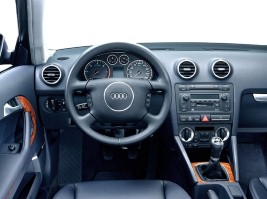
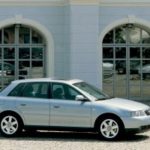
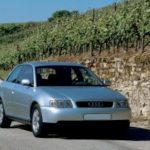
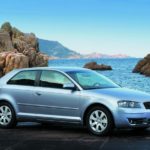
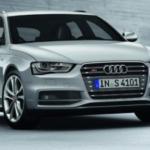
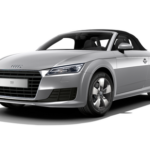
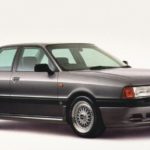
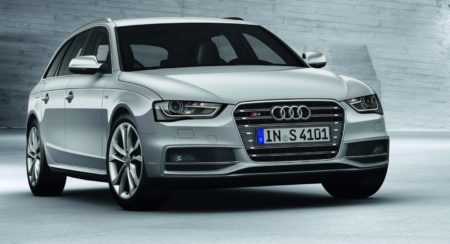
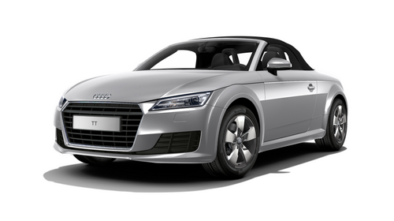
Hi buddy would you like your advice, i want to get the A3 2006 automatic which are the best?
What is the problem, when the engine starts in the morning, it runs unevenly, for about one minute, and then works normally ,,,, audi 3 ,,,, 1.6 petrol ,,, thanks in advance.
do you have experience with a3 1.6 tdi production 10 month 2012? Does the engine have any disadvantages?
Hello, greetings from Macedonia…
I want to take A3 1.9 77 kw 2007.
What should I pay attention to ???
Do you need to watch out for these labels
BJB, BKC, BXE AND BLS I which should be avoided….
Goodbye and thanks !!!!
hello i have an audi a3 yr, 2005 disaewl i have a problem the hood engine will not close